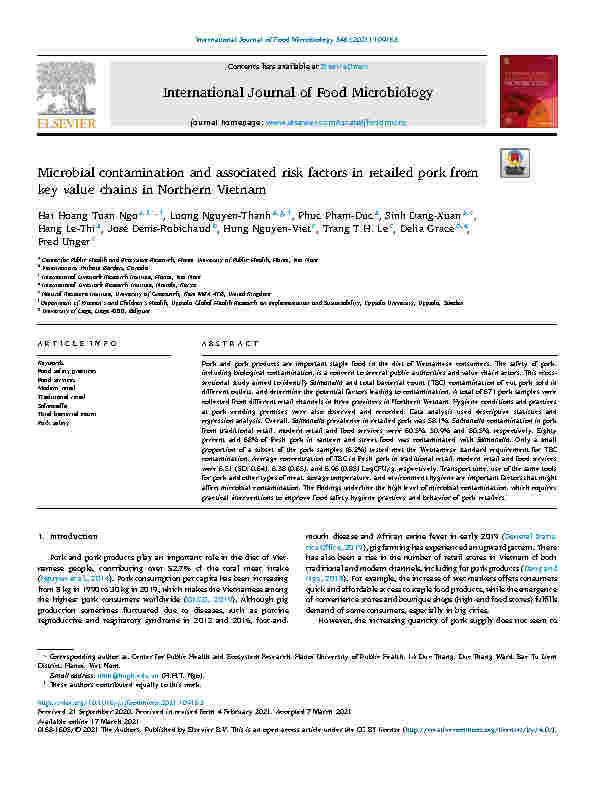Article Hai et al 2021_Biological contamination IJFM
24/08/2024
DOCUMENT DESCRIPTION
Pork and pork products are important staple food in the diet of Vietnamese consumers. The safety of pork, including biological contamination, is a concern to several public authorities and value chain actors. This cross-sectional study aimed to identify Salmonella and total bacterial count (TBC) contamination of cut pork sold in different outlets, and determine the potential factors leading to contamination. A total of 671 pork samples were collected from different retail channels in three provinces in Northern Vietnam. Hygiene conditions and practices at pork vending premises were also observed and recorded. Data analysis used descriptive statistics and regression analysis.
Overall, Salmonella prevalence in retailed pork was 58.1%. Salmonella contamination in pork from traditional retail, modern retail, and food services were 60.5%, 50.9%, and 80.5%, respectively. Eighty percent and 68% of fresh pork in canteen and street food were contaminated with Salmonella. Only a small proportion of a subset of the pork samples (6.2%) tested met the Vietnamese standard requirement for TBC contamination. The average concentration of TBC in fresh pork in traditional retail, modern retail, and food services were 6.51 (SD: 0.64), 6.38 (0.65), and 6.96 (0.85) Log CFU/g, respectively. Transport time, use of the same tools for pork and other types of meat, storage temperature, and environment hygiene are important factors that might affect microbial contamination. The findings underline the high level of microbial contamination, which requires practical interventions to improve food safety hygiene practices and behavior of pork retailers


